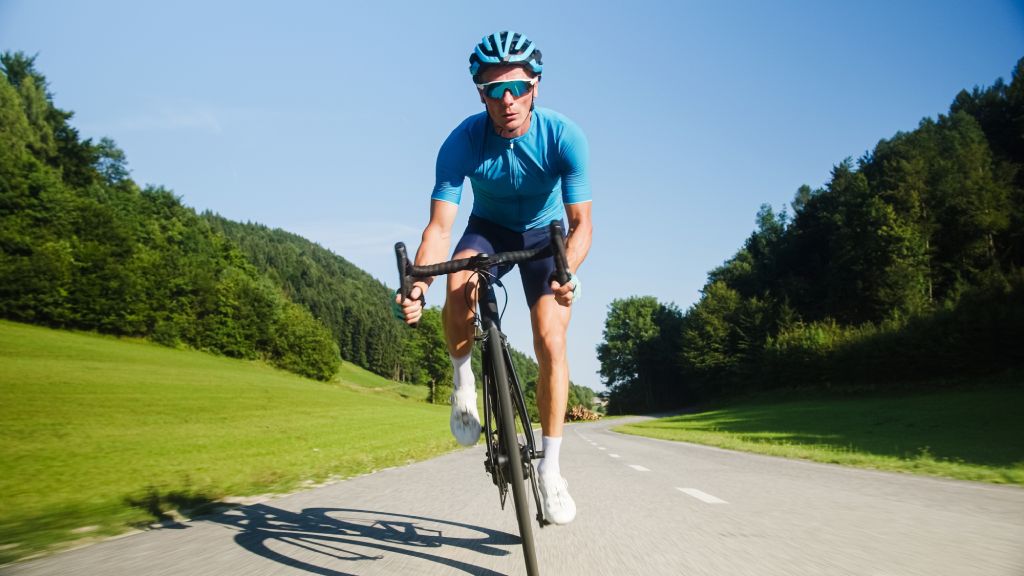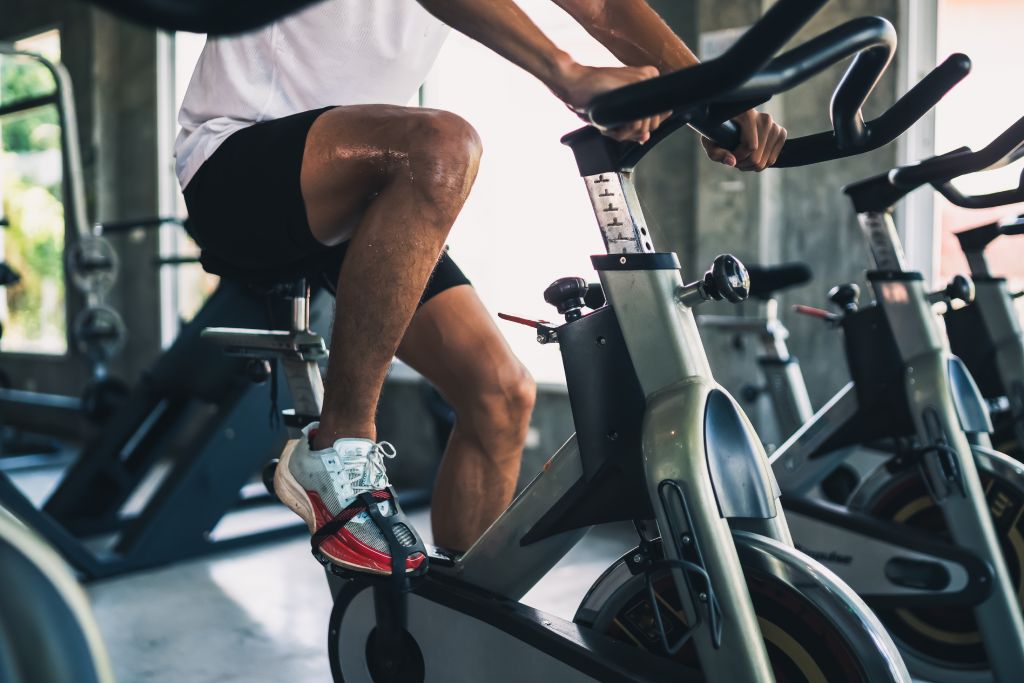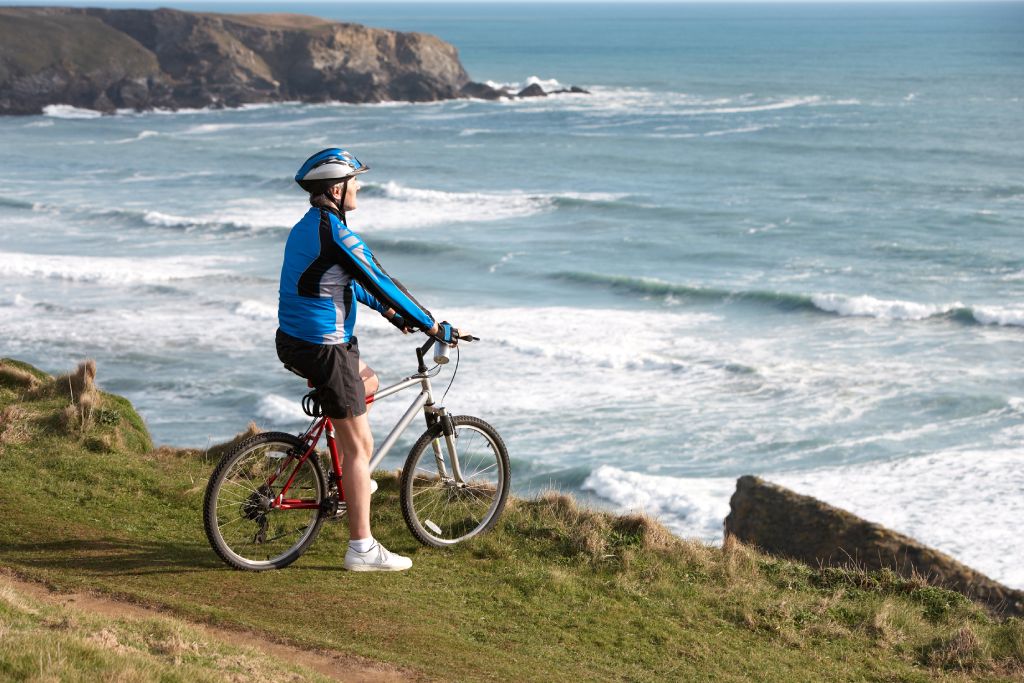Summary: Cycling can put pressure on the prostate, potentially worsening conditions like BPH or prostatitis. To protect your prostate, use a properly fitted saddle, adjust riding posture, wear padded shorts, take breaks, and stay hydrated. If prostate issues persist, consult a doctor. Prostate Laser Center offers advanced, minimally invasive BPH treatments.
Prevention is always a key part of managing personal health in general, and that’s no different when it comes to prostate health in particular.
It’s important to note that there is not a definitive connection between cycling and increased prostate cancer risk. However, cycling may aggravate benign prostatic hyperplasia (BPH) – an enlargement of the prostate that causes a variety of quality-of-life issues. It could also exacerbate prostatitis – inflammation of the prostate.
So, how can you protect your prostate when cycling, and what should you know about cycling and prostate health generally? Keep reading for practical information about enjoying this healthy activity while reducing its impact on the prostate.
How Cycling Can Affect the Prostate
It’s important to be clear about the overall health benefits of cycling along with the potential prostate-related health issues it can cause. And there’s no doubt that cycling is an effective form of exercise, helping many people reach the activity levels recommended by the CDC.
As a low-impact aerobic exercise, bike riding helps to improve the fitness of cyclists’ hearts, lungs, and blood vessels, as the Cleveland Clinic explains. This activity can also improve strength, coordination, flexibility, and balance.
Cycling is also popular and effective because it can be enjoyed in many different contexts and environments. Road biking, stationary bikes at a gym or at home, mountain biking, and many other types of cycling make it easier for people to find an option they enjoy.
That said, bicycle riding and prostate health should be considered when deciding on an exercise plan at the individual level. Certain aspects of cycling can affect the prostate, including:
Pressure and Prolonged Sitting
Cycling generally involves sitting on a seat (often called a saddle in the cycling world). The design of many bicycles and standard saddles puts riders, as well as the act of cycling, in a position that exerts pressure on their perineum – the area between the anus and scrotum.
Additionally, cycling may restrict blood flow and cause discomfort or irritation in that general area of the body.
The pressure caused by cycling can indirectly impact the prostate. If prostatitis or BPH occurs, riders can face significant quality-of-life issues, such as difficulty urinating and even infections. Prostatitis can also lead to erectile dysfunction directly and indirectly depending on its severity, as Harvard Health Publishing explains.
High-Intensity or Long-Distance Riding
Long-distance riding and high-intensity cycling can increase the pressure placed on the prostate. So can some types of riding that increase the pressure placed or impact on the prostate, such as road biking.
Bumps and vibrations from uneven terrain, as can be common in road biking and mountain biking, may increase both discomfort in the moment and contribute to the development of prostate issues.
Mitigating Pressure and Impact on the Prostate When Cycling
The good news is that there are effective and simple measures that can reduce the negative effects of cycling on the prostate. We review these actions in the last section of this article. First, let’s briefly consider why it’s important to protect your prostate when cycling.
Why Protecting the Prostate Matters
Prostate problems can cause serious issues related to overall quality of life. A variety of difficulties related to urination occur with both BPH and prostatitis. And, as noted in the previous section, prostatitis can also lead to erectile dysfunction, whether directly or indirectly.
That makes protecting the prostate a top priority. Exercise can support better prostate health and better health in general. That includes cycling, especially when riders take precautions in terms of preventing irritation and impact to the prostate while engaging in this activity.
Better protection while cycling has benefits beyond prostate health, too. A more comfortable ride means cyclists can spend more time riding with less pain and irritation, enjoying more of the benefits of regular exercise.
Cycling and Prostate Cancer
It’s important to note that there is not a clear connection between cycling and prostate cancer. A large-scale survey published in the peer-reviewed Journal of Clinical Urology found no significant connection betweenbicycle riding and prostate cancer.
Proper form and the right protective equipment are important for every type of exercise, and cycling is no different. The impact of cycling without these preventative measures can cause short-term discomfort in the pelvis and torso as well as contribute to more serious prostate-specific issues.
Tips to Reduce the Impact of Cycling on the Prostate
What changes can be made to better protect the prostate while cycling? There are several relatively simple adjustments that, at most, require some modest spending or relatively minor adjustments to technique and form. While these changes won’t eliminate the impact of cycling on the prostate, they can reduce them.
To protect the prostate when cycling, consider:
Choosing the Right Cycling Gear
The stock seat that comes with a bicycle is far from the only option for riders. Male-specific bicycle seats, designed with men’s anatomy in mind, often feature a depression or extra cushioning to reduce pressure on the perineum and surrounding area. Some of these seats have extra padding which can lower the pressure on the perineum and soften vibrations from bumps in the road.
Padded cycling shorts can also provide relief through extra cushioning. Combining these two pieces of equipment can lead to a further reduction of pressure and prostate-related issues resulting from cycling. They are simple adjustments that don’t require advanced knowledge or skills to use and benefit from.
There are also certain types of tires that can better absorb bumps in the road, so the bumps are less jarring to your body.
Adjusting Riding Positions on the Bicycle
Many bicycles allow the rider to adjust the seat and handlebars, among other parts of the bike, to offer a more comfortable riding experience.
For seat adjustments, tilting the angle of the seat slightly downward can redirect the pressure away from the perineum and prostate. This minor change may take a little getting used to, but it can reduce the impact of cycling on the prostate.
Something as simple as changing the handlebar position on a bicycle can change riding form for the better by reducing impact on the prostate. Specifically, raise the handlebars to reduce leaning forward while riding. With a more upright posture, less of the rider’s weight sits directly on the perineum.
A higher handlebar position can also make it easier to stand up while riding, which is another potential adjustment to reduce the impact of cycling on the prostate. If you aren’t sitting on a seat while biking, bumps in the road won’t shove the seat into your perineum.
Take Breaks to Provide Relief
Taking a break from active riding every so often is likely the simplest way to reduce the pressure placed on the perineum and prostate. It’s also possible in many situations to stay active while doing so as well. Walking the bicycle for a few minutes allows riders to avoid fully coming to rest as they exercise while also providing some relief.
Alternatively, standing up on the bicycle’s pedals while riding can offer similar relief. This approach also helps riders avoid slowing down, which can be vital when trying to meet a specific time-and-distance goal or to hit a specific time mark for high-intensity exercise.
Maintaining Proper Form and Technique
Changing weight distribution while riding can also alleviate pressure on the perineum and the impact of sudden shocks. Distributing weight between the pedals, handlebars, and seat is the goal. The exact strategy can differ depending on the type of bike and type of riding involved, so it’s best to consult a knowledgeable bike fitter for more personalized advice.
Prioritizing Recovery and Self-Care
This advice is foundational and doesn’t only apply to protecting the prostate when cycling, but it bears repeating. Cycling can be high-intensity exercise, so it’s important to recognize and mitigate the toll it takes on the body while earning the many longer-term benefits.
Staying hydrated before, during, and after exercising can help to avoid dehydration and the many issues that come along with it, as Johns Hopkins Medicine explains in detail.
Similarly, stretching after exercise like cycling can help to prevent soreness and promote recovery. A stretching routine is a simple and quick addition to an established exercise regimen.
Consulting a Professional
Physicians and physical therapists can provide informed guidance about how cycling aligns with individual health and the need for exercise to promote good overall health in general. They can provide guidance on reducing soreness and other issues that arise from cycling.
While they aren’t medical professionals, professional bike fitters can provide in-depth advice on how to make cycling more comfortable. They can easily take individual needs, such as reducing pressure on the perineum, into account and make suggestions for changing the alignment of a bicycle as well as for specialized equipment.
BPH Treatment Options
Prostate Laser Center is dedicated to providing minimally invasive, MRI-guided BPH procedures. Learn more about our strategies for treating BPH and see if you qualify as a patient by requesting a consultation today.
NOTE: The information provided on this website is general medical information and does not establish a physician-patient relationship. Please discuss your particular situation with a qualified medical professional.



